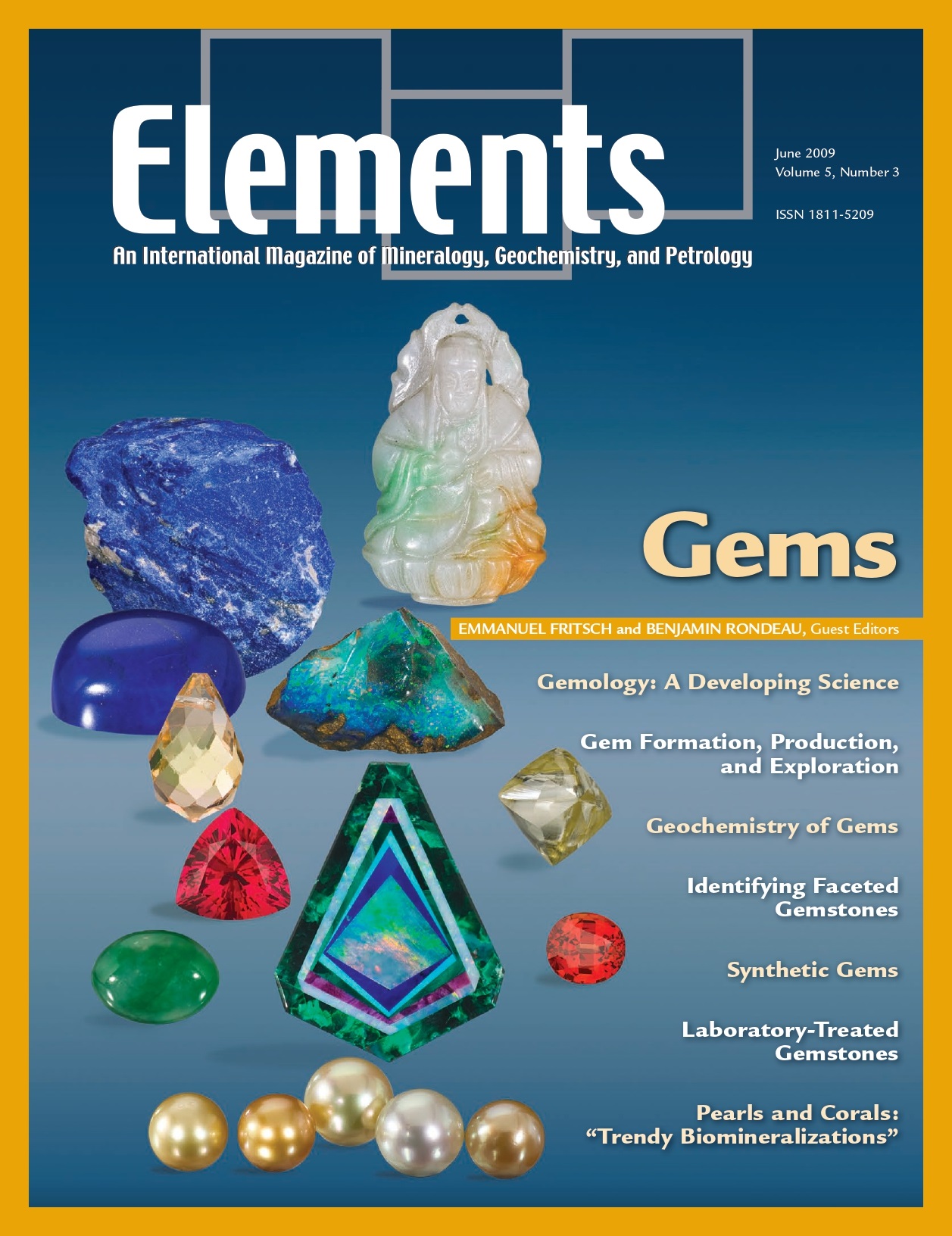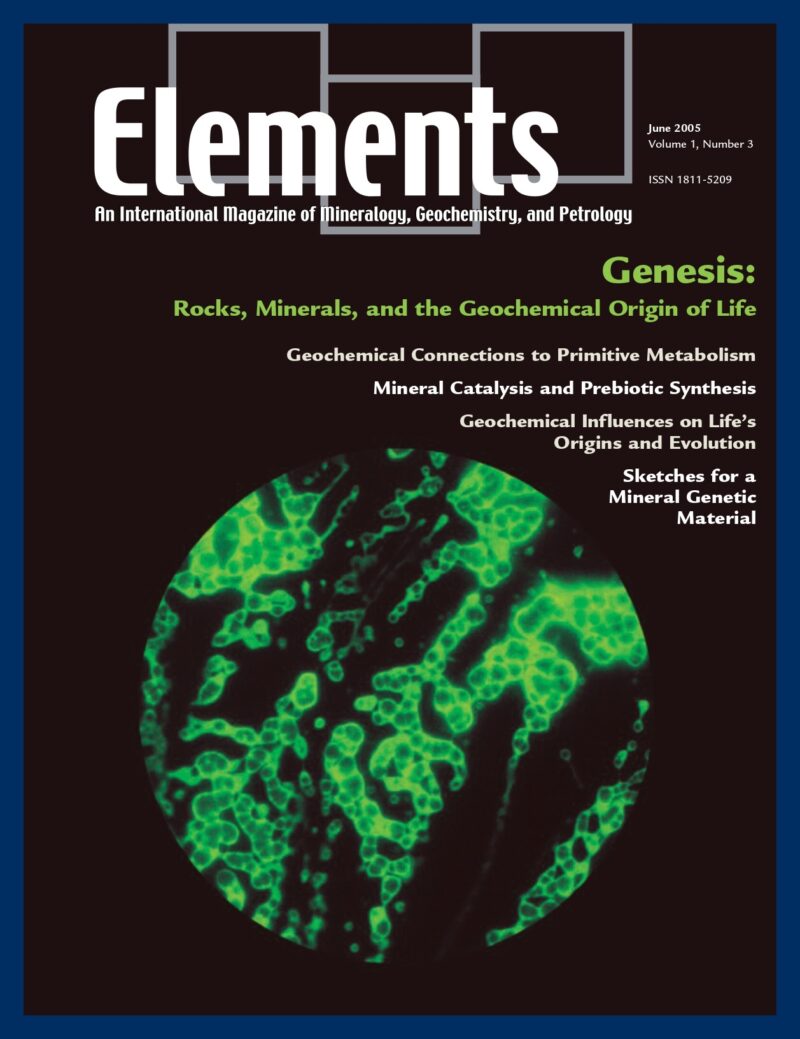
Bentonites – Versatile Clays, April 2009, Vol. 5, No. 2
June 28, 2024
Cosmochemistry, February 2011, Vol. 7, No. 1
June 28, 2024Gems, June 2009, Vol. 5, No. 3
$20.00
Most gems are natural minerals, which, although scarce and small, have a major impact on society. Their value is directly related to proper identification.
Gems
June 2009, Vol. 5, No. 3
Most gems are natural minerals, which, although scarce and small, have a major impact on society. Their value is directly related to proper identification. The determination of the species is key, of course, and must be done non-destructively. This is where classical tools of mineralogy come into play. However, other issues are paramount: Has this gem been treated? Is it natural or was it grown in a laboratory? For certain varieties, being able to tell the geographical provenance may enhance value considerably. These issues necessitate cross-linking the formation of gems with their trace-element chemistry. These unusual mineralogical and geochemical challenges make the specificity of gemology, a new and growing science, one of the possible futures of mineralogy.
Why You’ll Love Elements Magazine:
- Expert Contributors: Articles written by renowned researchers in the field of geoscience.
- Engaging Content: Join a community of readers who are passionate about Elements.
- Exceptional Quality: Each issue is printed on high-quality paper with stunning visuals and detailed illustrations that bring complex scientific concepts to life.
Order your copy of the June 2009 issue of Elements magazine today and uncover the beauty of gems.
Related products
-
Phosphates And Global Sustainability, April 2008, Vol. 4, No. 2
$20.00Phosphorus is a unique element: it is essential to the existence of all living forms, and as such controls biological productivity in many terrestrial and marine environments; but when in excess, it leads to uncontrollable biological growth and water-quality problems. This has become a common environmental issue, resulting from our careless use of phosphorus in agriculture, yet phosphate ore deposits, from which fertilizers are produced, are a finite natural resource.
-
Genesis: Rocks, Minerals, And The Geochemical Origin Of Life, June 2005, Vol. 1, No. 3
$20.00Few scientific questions so capture the public imagination, or provoke such lively debate, as how life on Earth emerged. In this issue of Elements, four of the most creative minds in origins research present their original insights on the geochemical origins of life.
-
Zircon – Tiny But Timely, February 2007, Vol. 3, No. 1
$20.00Where would Earth science be without zircon? As Earth’s timekeeper, zircon has proven to be a remarkable and versatile mineral, providing insights into deep time and ancient Earth processes. However, there is still much to learn about Earth’s history from zircon and its behaviour.




